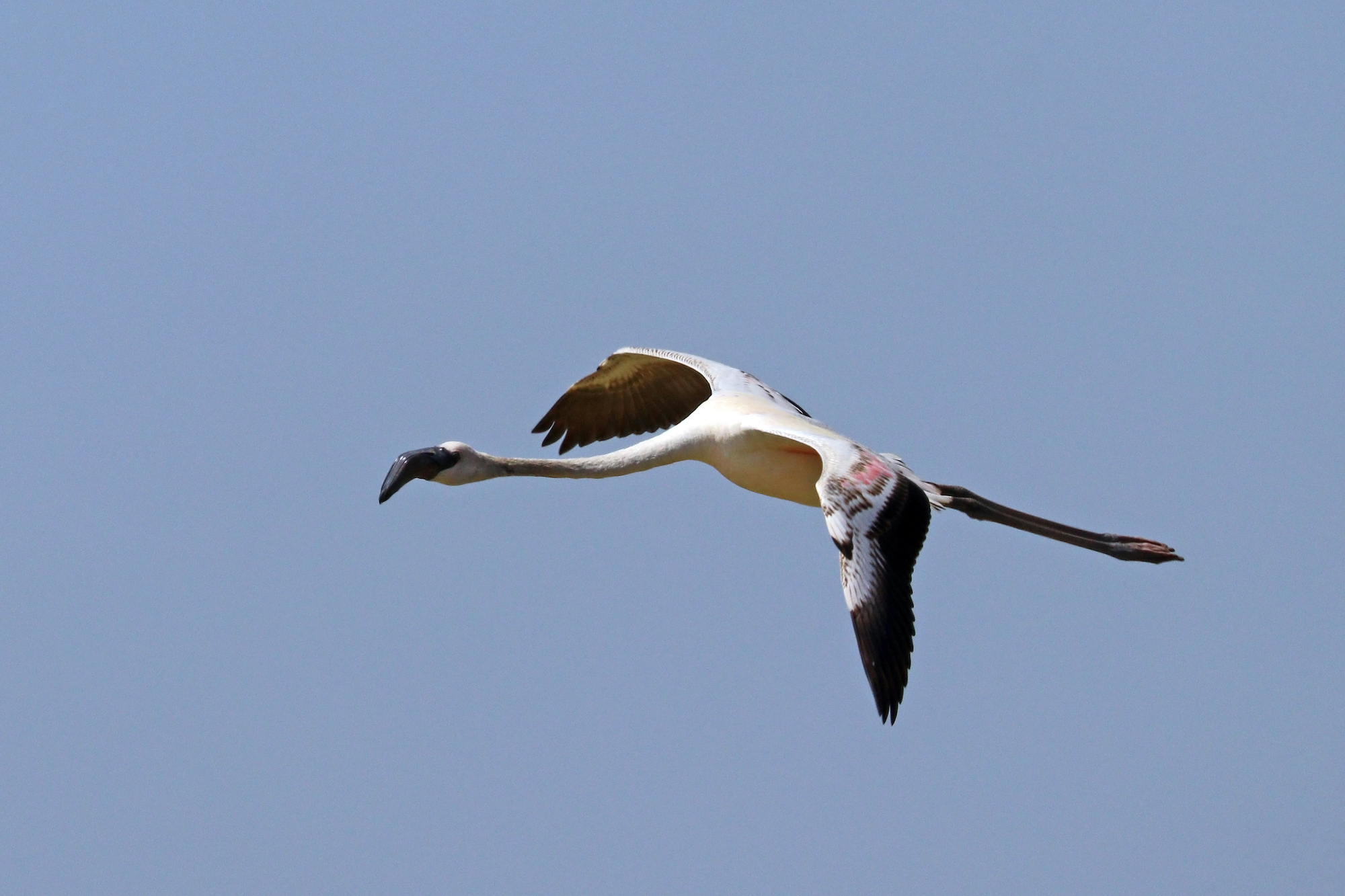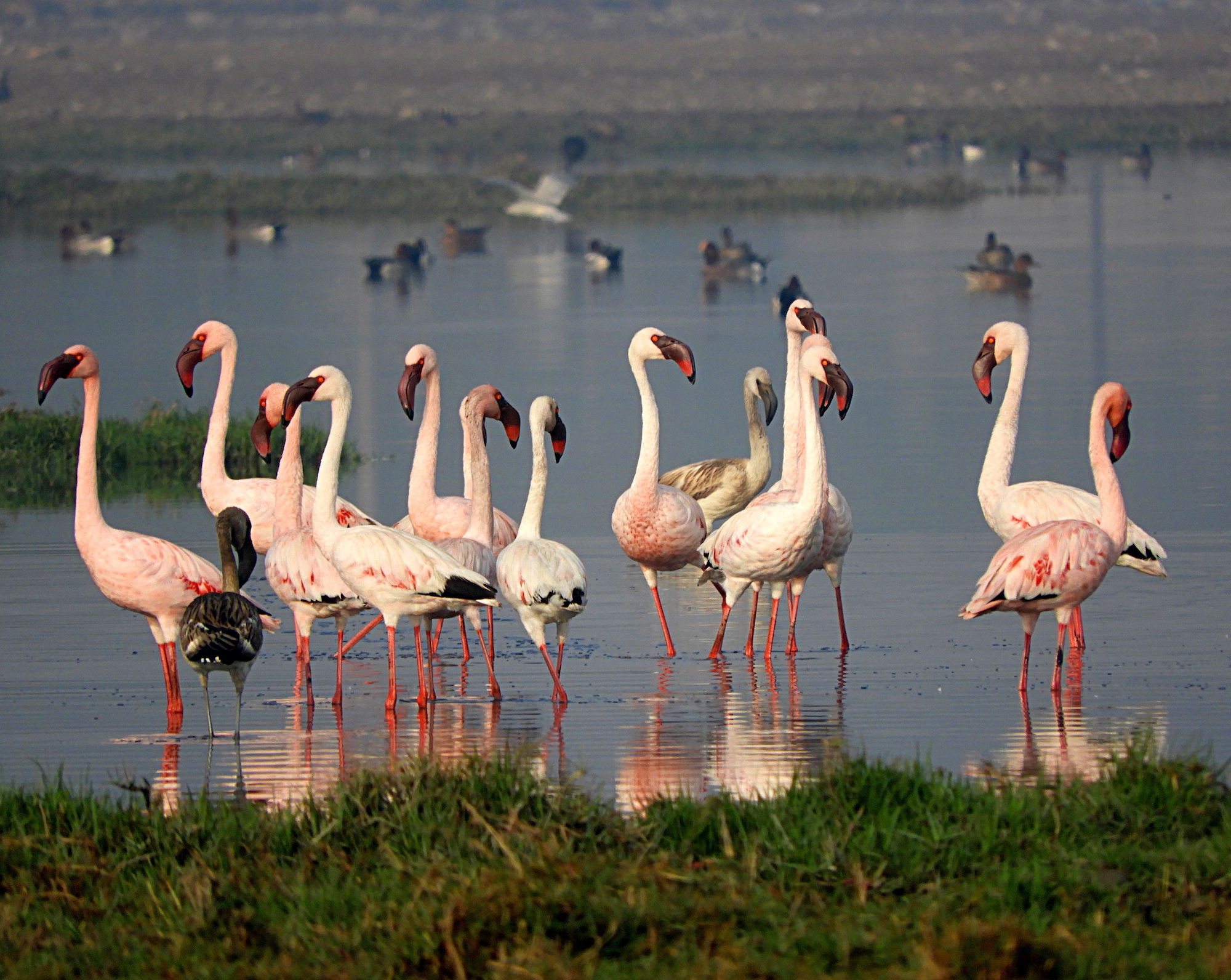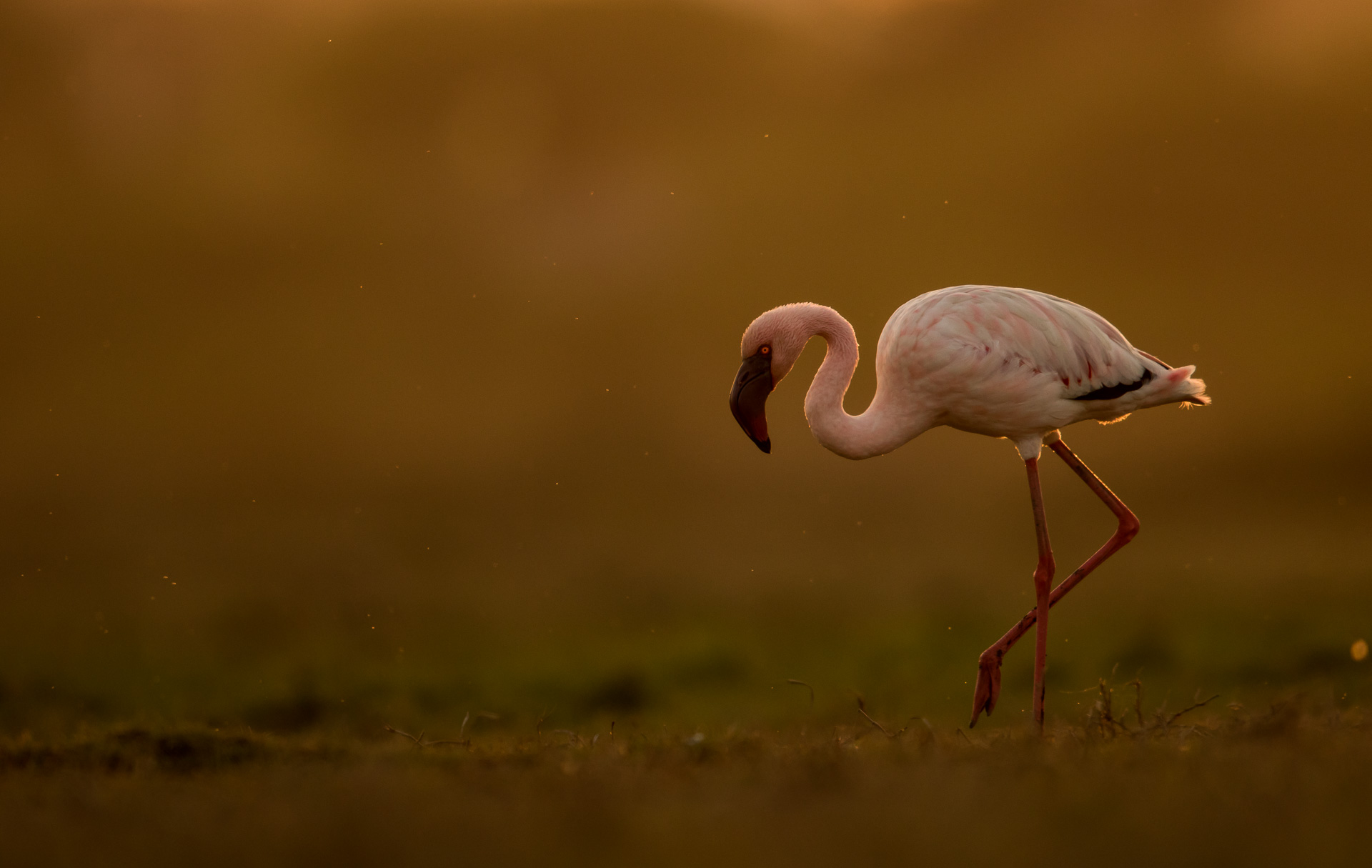Given it’s equatorial location & abundance of water, the sheer density of wildlife in Uganda can get your head spinning. There are (well) over 1000 bird species confirmed in the country alone. And what birds! Some of them look like actual runway models. We have already met the gorgeous Greater Flamingo & today we meet the lovely Lesser Flamingo (or Phoeniconaias minor).

Birds of Fashion
The Lesser Flamingo is the smallest in stature, but most numerous of the flamingo species. They also live in enormous colonies (some up to 1 million individuals) which are among the largest bird aggregations found on the planet. Physically they can be very similar to their Greater cousins, their plumage tends to be sort of pinkish-white (depending on their diet) but their beaks are completely dark (the easiest way to recognize them).

Family Ties
While they may look like their cousins, the Lesser Flamingos differ from them in some fairly extreme ways. Breeding practices differ considerably, where the Greaters are monogamous, it is common for the Lessers to be polyandrous & take more than one partner. Once coupled, both parents take turns incubating & finding food, hatchlings are also brooded by both parents. It’s interesting to note that the Lesser Flamingos breed roughly every 5-8 years, it isn’t an annual cycle.

Lesser Flamingo Lifestyle
Lesser Flamingos are omnivoreous filter-feeders using their highly-specialized beak to filter small algae & small critters from the water (by pumping their tongue up & down). Their diet consists mainly of blue green algae (which is loaded with protein, lipids & carbs) but supplement with insects & crustaceans when found in their filter beaks.
These graceful birds prefer saltwater habitats including saline or alkaline lakes, estuaries, coastal lagoons & mudflats. Although they drink fresh water (& are great swimmers) they don’t often congregate in it.

More Birdwatching
We are excited to embark on this fun new series of posts & can’t wait to share more about the amazing bird species that make up the diverse wildlife of Uganda. Stay tuned for more to come & in the meantime, perhaps you should come visit Uganda & meet some of them for yourself!






